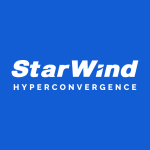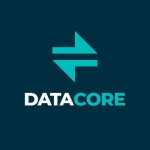What is our primary use case?
Our company is global. We have a wide range of customers and clients in many countries. Our customers who use VxRail are typically big companies.
Some of our customers are in the banking sector and use VxRail because they're concerned about using automated software for updates, upgrades, etc. VxRail is for a specific category, mostly for banking, oil, and gas — a few others sectors as well.
What is most valuable?
For me, the most valuable feature is in relation to the software updates. Updated software is very critical as I cannot risk making a mistake. To avoid this, VxRail provides me with pre-tested updates that can be implemented with little interruption. Since we are talking about banking, oil, and gas, there's no need for automating virtual machine creation.
What needs improvement?
Currently, I don't see much room for improvement; however, there could be better documentation and they should allow everyone to access the simulator. If Dell could provide access to a simulator or a demo for regular users, it would make things much easier.
In order to gain access, you need to be a golden partner — normal users can't do it. It would be more beneficial to everyone if they could access the simulator and run some trial and error experiments before operating the real product. Many other companies (like Cisco) allow all of their users to do this. You can simply download the materials from the internet, including the simulator.
In regard to VxRail or Dell products in general, you cannot do this because it's very limited to specific partners — typical end users don't have access. It would be great if it was more available to all partners, not just their top-tier partners. There would be less resistance from potential customers because they wouldn't be afraid of daily operations, support, etc.
For how long have I used the solution?
I have been dealing with VxRail for roughly two to three years.
What do I think about the stability of the solution?
VxRail is very stable. We haven't experienced any issues, stability-wise.
What do I think about the scalability of the solution?
As VxRail is constantly updating, it makes it really easy to scale-out and scale-up.
How are customer service and technical support?
We are experiencing some issues with Dell's live-chat support as the support is different based on the support included with the hardware. If you're on a basic plan, there will be some challenges. We're hearing this from our customers in Gulf countries, third-world countries, and even second-world countries. They also face some challenges due to international time zones. There should be online support everywhere, not limited to specific geographical locations, it's limiting. Other companies are not doing this. If you compare Dell with HP, that's not the case. With HP, whenever you have a problem, despite the hardware, you get premium support. With Dell, communicating with support can be a challenge.
How was the initial setup?
The complexity of the initial setup depends on your infrastructure as you need to integrate some existing components. It's not only about the VxRail components, but integration with the existing network and firewall. It's case-by-case. Sometimes it's very easy, sometimes it's not.
What about the implementation team?
We do not deploy this solution for our customers. We step in once it's been deployed. We handle end-to-end operations like security, computing, and networking — the whole portfolio.
What's my experience with pricing, setup cost, and licensing?
VxRail is not cheap, but it's not expensive either. Mainly it's for big enterprise customers. VxRail has its own or target customers and they know the value of this product; however, the hyper-converged solution is not for everyone. The good news is there are no hidden costs.
What other advice do I have?
I would absolutely recommend VxRail. From my previous experience, and because I work with a wide range of technical engineers, compared to other products, this solution offers a solid hardware performance. Generally, we look for value combined with price. If you're able to find a better solution, it will also come at a higher cost. Considering the range of prices overall, Dell is the best — my first choice. You can go for a premium version, but there will be an additional cost. For example, you can go for NetApp, which is better hardware, but the price is higher.
Overall, on a scale from one to ten, I would give VxRail a rating of six.
Which deployment model are you using for this solution?
On-premises
Disclosure: My company has a business relationship with this vendor other than being a customer: Partner















